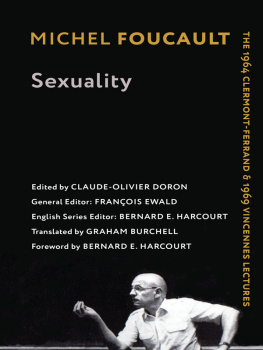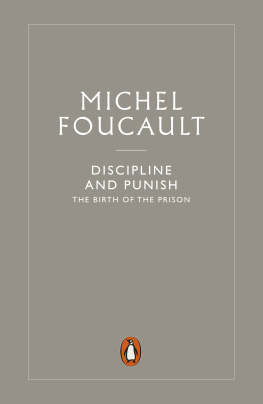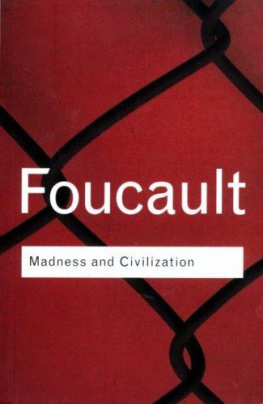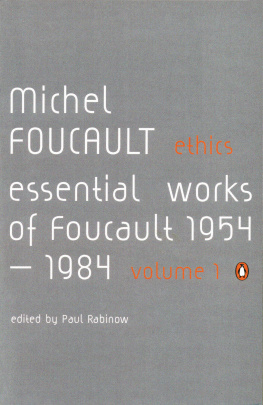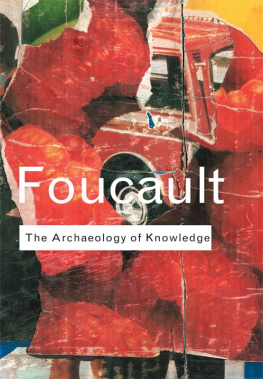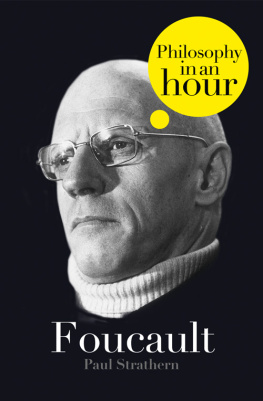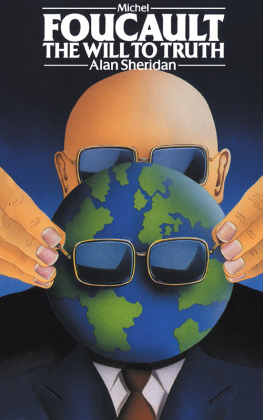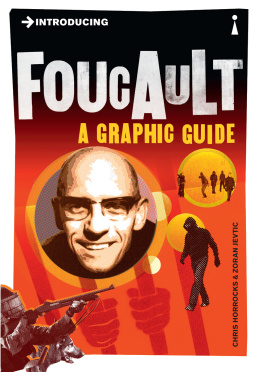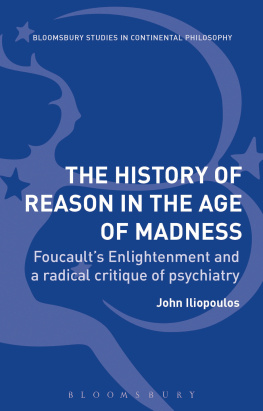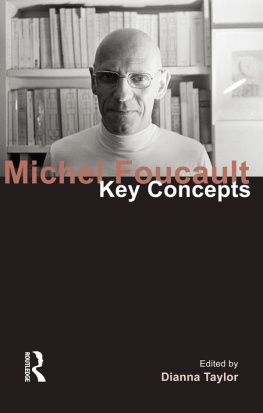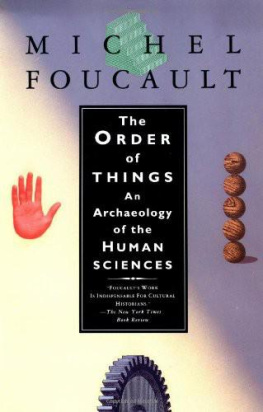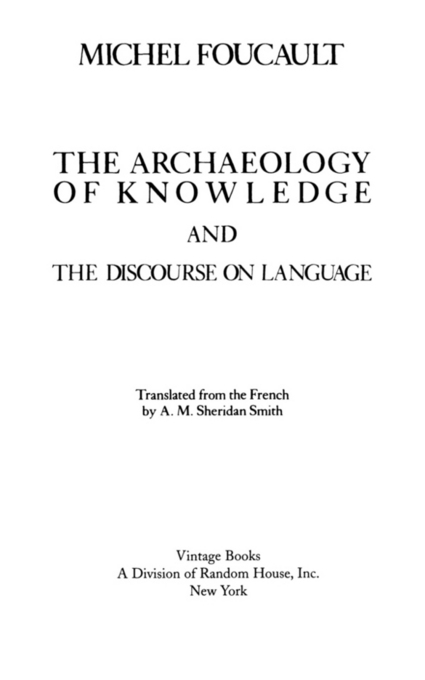Also by Michel Foucault
Madness and Civilization: A History of Insanity in the Age of Reason
The Order of Things: An Archaeology of the Human Sciences
The Birth of the Clinic: An Archaeology of Medical Perception
I, Pierre Rivire, having slaughtered my mother, my sister, and my brother A Case of Parricide in the Nineteenth Century
Discipline and Punish: The Birth of the Prison
The History of Sexuality, Volumes 1, 2, and 3
Herculine Barbin, Being the Recently Discovered Memoirs of a Nineteenth-Century French Hermaphrodite
Power/Knowledge: Selected Interviews and Other Writings, 19721977
The Foucault Reader (edited by Paul Rabinow)
Vintage Books Edition, January 2010
Copyright 1972 by Tavistock Publications Limited
All rights reserved. Published in the United States by Vintage Books, a division of Random House, Inc., New York. Originally published in Great Britain by Tavistock Publications, Ltd. Originally published in France under the title LArchologie du Savoir by ditions Gallimard. Copyright ditions Gallimard, 1969.
Vintage and colophon are registered trademarks of Random House, Inc.
The Discourse on Language (Appendix) was originally published in French under the title Lordre du discours by ditions Gallimard. ditions Gallimard 1971. English translation by Rupert Swyer. Copyright 1971 by Social Science Information.
The Library of Congress has cataloged the Pantheon edition as follows:
Foucault, Michel. The archaeology of knowledge.
(World of man)
Translation of Larchologie du savoir.
Includes the authors The Discourse on Language, translation of Lordre du discours
Learning and scholarship. I. Foucault, Michel.
Lordre du discours. English. 1972. II. Title.
AZ101.F6813 1972 001.2 72-1135
eISBN: 978-0-307-81925-3
www.vintagebooks.com
v3.1
PART I
Introduction
IntroductionFor many years now historians have preferred to turn their attention to long periods, as if, beneath the shifts and changes of political events, they were trying to reveal the stable, almost indestructible system of checks and balances, the irreversible processes, the constant readjustments, the underlying tendencies that gather force, and are then suddenly reversed after centuries of continuity, the movements of accumulation and slow saturation, the great silent, motionless bases that traditional history has covered with a thick layer of events. The tools that enable historians to carry out this work of analysis are partly inherited and partly of their own making: models of economic growth, quantitative analysis of market movements, accounts of demographic expansion and contraction, the study of climate and its long-term changes, the fixing of sociological constants, the description of technological adjustments and of their spread and continuity. These tools have enabled workers in the historical field to distinguish various sedimentary strata; linear successions, which for so long had been the object of research, have given way to discoveries in depth. From the political mobility at the surface down to the slow movements of material civilization, ever more levels of analysis have been established: each has its own peculiar discontinuities and patterns; and as one descends to the deepest levels, the rhythms become broader. Beneath the rapidly changing history of governments, wars, and famines, there emerge other, apparently unmoving histories: the history of sea routes, the history of corn or of gold-mining, the history of drought and of irrigation, the history of crop rotation, the history of the balance achieved by the human species between hunger and abundance. The old questions of the traditional analysis (What link should be made between disparate events? How can a causal succession be established between them? What continuity or overall significance do they possess? Is it possible to define a totality, or must one be content with reconstituting connexions?) are now being replaced by questions of another type: which strata should be isolated from others? What types of series should be established? What criteria of periodization should be adopted for each of them? What system of relations (hierarchy, dominance, stratification, univocal determination, circular causality) may be established between them? What series of series may be established? And in what large-scale chronological table may distinct series of events be determined?


